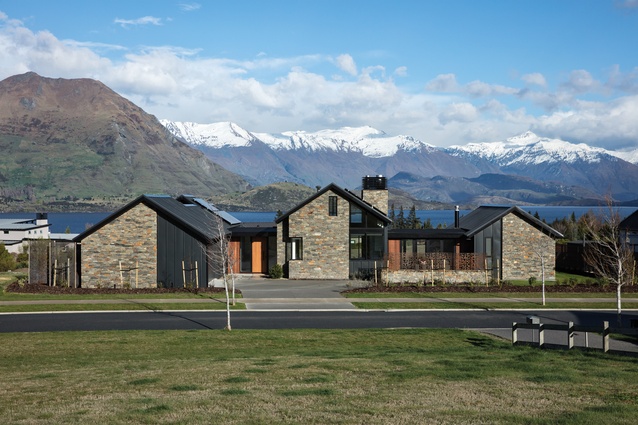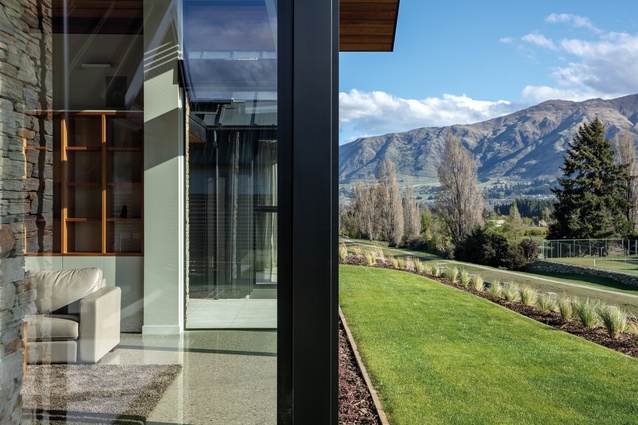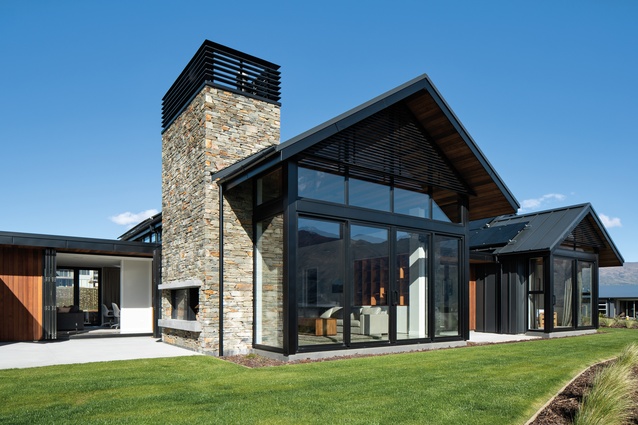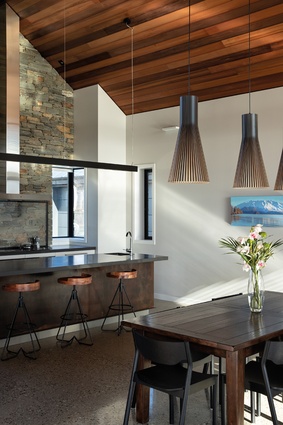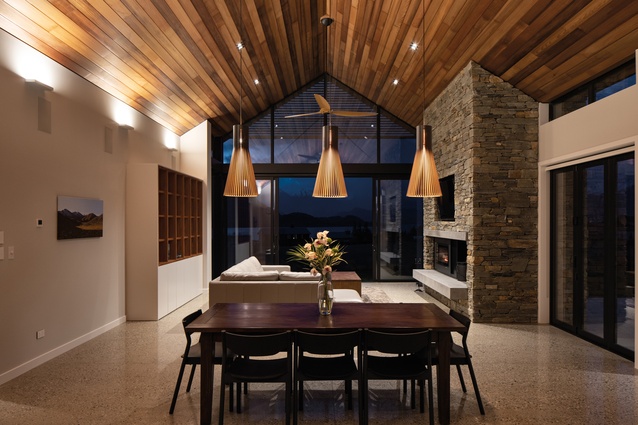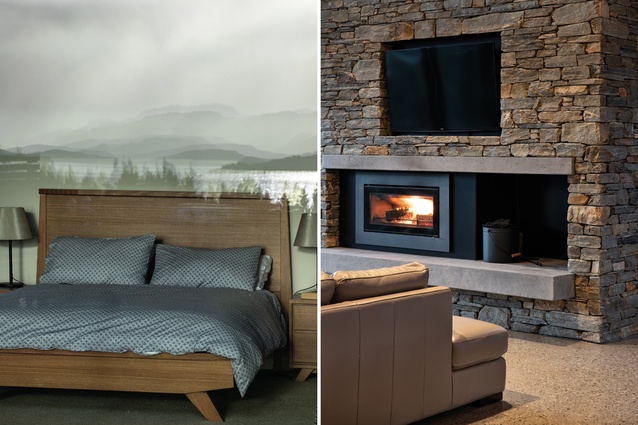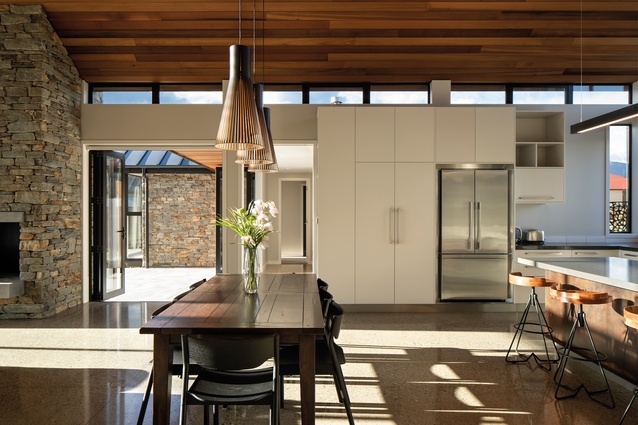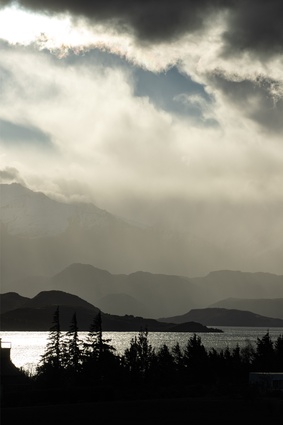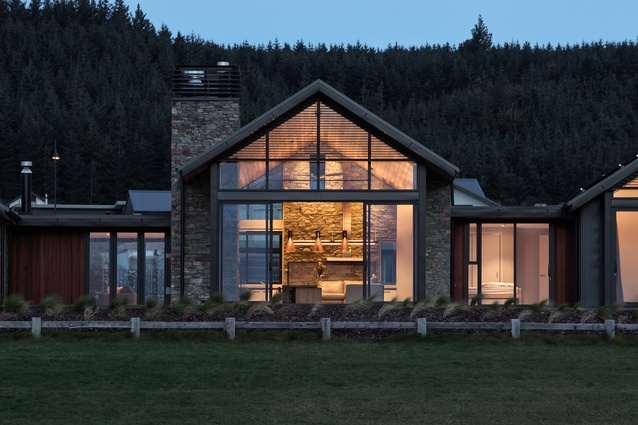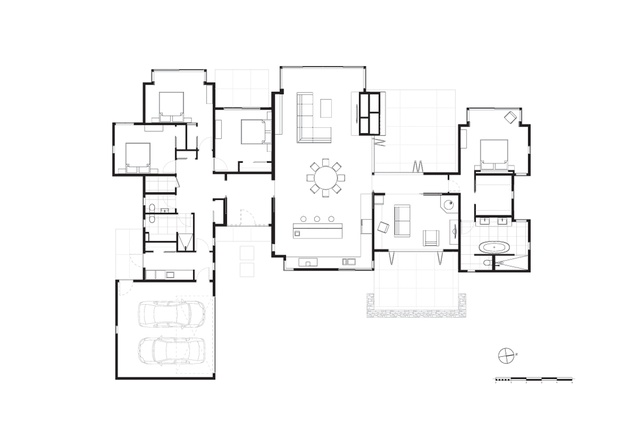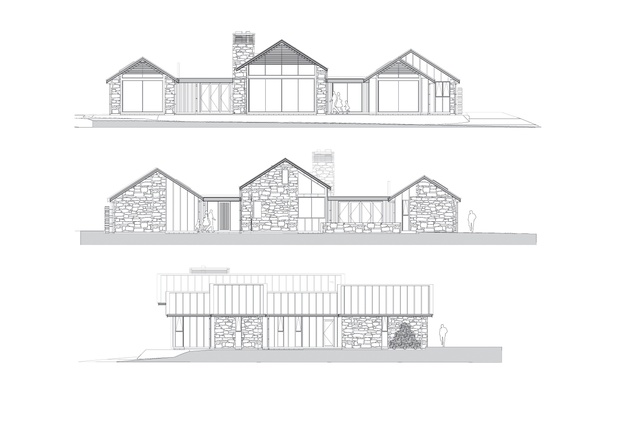Houses Revisited: Valley Crescent House
Made up of three gable forms, this lakeside home in Wanaka has incredible views from every room. First published in 2018.
With vistas of Black Peak, Treble Cone and Lake Wanaka to be enjoyed from this elevated site, it made sense to design a house that fronted the view and didn’t compete with it, in a style that ties in with the landscape and history of the area.
Architect Barry Condon from Condon Scott Architects designed the home to be encased in three gable forms, each with full-height windows oriented to the view. The living room and kitchen are contained in the central gable, while the main bedrooms are arranged in the outer forms, with linking passages between. These passages have lower ceilings, which accentuate the effect of the cathedral ceilings in the gabled areas. Even in these passages, though, the view can be seen through glazed walls, which can be opened up in the summer months to allow a breeze through.
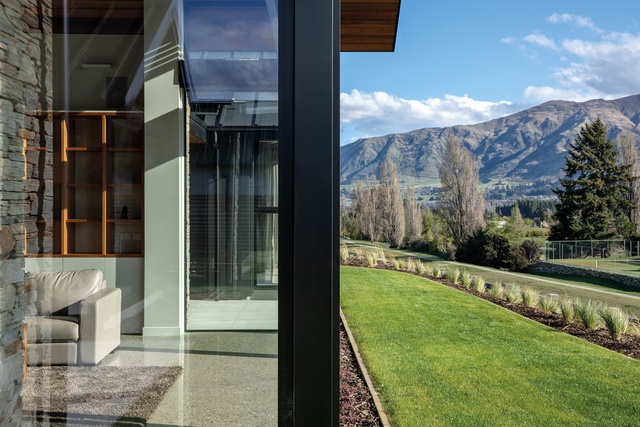
“The house is designed to be opened up completely when it is hot, which it is in summer; sometimes it’s 30oC-plus in the afternoons,” says Condon. “One whole corner of the living room can be opened so you can easily move indoors and out. We get this wind from the north-west sometimes so we made a sheltered courtyard, tucked in between the master bedroom and the living room, with an outdoor fireplace.”
Another courtyard has been created off the family room, which is accessed from the northern passageway. A Corten steel screen protects this area from the gaze of passers-by. This material carries through to the custom, honeycomb firewood storage on the southern wall of the house and, also, the kitchen, where it fronts the island.
The kitchen is to the east of the living room, with windows that allow the morning sun to flood in. A schist wall is a major feature of this space and one that refers to the history of the area. To ensure the schist isn’t marked or spotted by oil stains, the architects saw-cut a metal frame to fit over the schist around the stovetop, with glass over the top.
“The schist creates this reference to the buildings made by the early European settlers in the Lakes District. The home-owners wanted something quite understated, so we used a minimal material palette,” says Condon.
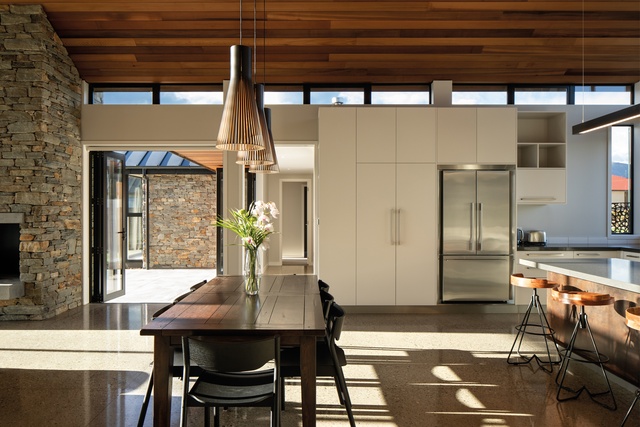
Inside, this palette includes rich cedar ceilings, aluminium windows and concrete flooring, which has a local pebble stone aggregate. Similarly, outdoors, the cladding is a mix of schist, Rosenfeld Kidson vertical cedar weatherboards and Calder Stewart Euro-Tray steel cladding. “The warmth of the wood and the texture of the schist all contrast nicely with the metal cladding,” says Condon.
The house is fully automated for sound, security and heating. Underfloor heating has been installed throughout and, also, the concrete slab will generate some passive heating when the sun is out. High-level louvres mitigate the heat in summer and Haiku fans, which are a feature in themselves thanks to their propeller look, provide some relief also.
The home-owners currently reside in Adelaide and use the house for holidays. “It is a simple plan and very low maintenance,” says Condon.” I think, eventually, they may come over here full time. It’s set up to be used as a functional and pleasant family home.”

Material Selector
Barry Condon talks about his choices for the external cladding of this Wanaka house.
The house has three different styles of cladding. How did you ensure these all worked together?
The natural stone and metal are both practical and low-maintenance materials that complement each other; the randomness of the stone contrasts with the clean lines of the metal cladding. To add some warmth, we introduced natural cedar, which, in turn, picks up on the brown and ochre hues of the schist, tying the three materials together.
Why use Calder Stewart Euro-Tray?
We wanted something clean, modern and low maintenance. Certain roofing products have a more-industrial profile and can look quite commercial. We wanted something with a more residential feel and the wide trays of this product suited the look of the house.
Is schist difficult to deal with when it comes to cladding?
We looked at several different types of schist examples to see what the client preferred. This particular style uses minimal mortar and has a very tooled and crafted feel to it.
Click here to see more Houses Revisited. And sign up to our email newsletters to receive Houses Revisited straight to your inbox.
Note: These are stories from our archives and, since the time of writing, some details may have changed including names, personnel of specific firms, registration status, etc.

